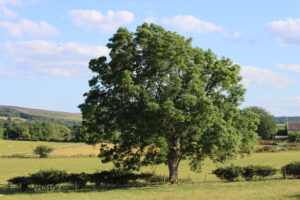What authorities and developers should know about UK Biodiversity Net Gain policy
With new developments now subject to a Biodiversity Net Gain requirement, Environment Journal asks ecological consultant Ben Kite what professionals need to know about this far-reaching requirement.
Revitalising natural habitats and in turn safeguarding vulnerable species is high on the list of priorities in the 2021 UK Environment Act, and not without good reason.
As Environment Journal reported in November, between 1934 and 1984, 97% of the UK’s species-rich grasslands were lost. Just one example of why the country ranks among the world’s worst for biodiversity, new legislation hopes to improve this through the introduction of Biodiversity Net Gain requirements, with the Department for Environment, Food and Rural Affairs (DEFRA) conducting a consultation on how the industry feels this will work. But what does the policy actually mean, and how much protection is offered?
Ben Kite is Managing Director of ecological consultancy EPR, assisting developers with environmental compliance. As he explains, Biodiversity Net Gain is a significant step forward, but local authorities and private companies still need clarity.
‘[The policy] makes it a requirement of planning permission for a development to demonstrate it can deliver a net gain in biodiversity,’ says Kite, explaining some householder applications, for example extending an existing property, are exempt. ‘This involves an ecologist going out to map all the habitats on the development site, before work begins, which is then classified using a system called UK Hab. So you say “that is a lowland meadow type grassland”, or “this is lowland peatland”.
‘The condition of the habitat is judged from poor to good. Punch that data into the calculator, and it tells you how many biodiversity units are on site before anything happens,’ he continues. ‘Basically, what the Environment Act requires now is that after development the score needs to be 10% higher than it was before. And if that’s not possible, you have to purchase biodiversity units, and a biodiversity net gain site [in another location]’.
The idea of developers meeting targets through offsetting may sound alarms, but Kite points out measures exist to reduce the likelihood of exploitation. Specifically, penalties are set at a ‘punitively high level’ for failing to deliver biodiversity net gain on-site, increasing with the distance of net gain efforts from original developments.
‘Most sites I’ve worked on have been able to provide something locally, and the developers have decided that’s preferred. There’s enough of a penalty to discourage people. I’ve got a number of projects where the developer is offsetting elsewhere, but in the immediate area,’ says Kite, revealing homes built on sites adhering to Biodiversity Net Gain often offer better financial returns, increasing the appeal of compliance. ‘The big concern was you’d end up sweeping all the biodiversity in the country into the corners, then you’d have areas of biodiversity deprivation where people live. That would be disastrous.’
Nevertheless, there is some potential for developers to cheat the system – levelling and removing habitats before biodiversity assessments happen. Unlikely, and illegal, guidance to authorities is to treat such examples as worst case scenario biodiversity loss developments. This means firms would need to undertake extensive work to bring biodiversity scores back to a net gain. Crucially, though, guidance on enforcement is currently lacking.
Kite’s concerns go further, too. Some types of habitat, such as ancient woodland, are considered irreplaceable. So what happens if irreparable damage to these areas cannot be avoided? Meanwhile, only around one-third of UK local authorities have an in-house ecologist, meaning there is a heavy reliance on consultants. While many of these will work fairly and neutrally, ensuring their assessments are accurate is essential: ‘There needs to be somebody scrutinising that work to make sure it’s right… This current transition period is supposed to help local authorities get expertise in place,’ Kite says.
This in itself is a major challenge, with local authorities facing huge budgetary shortcomings following a decade of austerity and then an economically devastating pandemic. Compounding this, ecologists are in high demand and short supply. Organisations that do employ them need to work hard, and pay well, to keep their specialists. But as Kite points out, doing nothing is a false economy, because money will inevitably have to be found at some point in the future.
‘The Environment Act makes it mandatory for local authorities to produce a nature recovery strategy for their area. They need somebody to write that… an ecologist. [The best approach is to] connect the two problems. So, write a local nature recovery strategy that says ‘these are the things we want to do in our district for biodiversity enhancement’. Then, identify how much that is going to cost. Convert that into biodiversity units at a tariff, sell that tariff to developers, and use it to pay an ecologist to administer the process,’ Kite advises. ‘If local authorities are clever, they’ll be thinking about that now, and putting systems in place so they won’t suddenly have to think about where to find money for the ecologist.’
Image credit: Palle Knudsen, Scotty Turner, Juanma Clemente-Alloza














